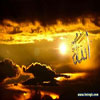Ideology of Iranian revolution

The ideology of the Iranian Revolution can be summarized as populist, nationalist and most of all Shi"a Islamic.
The Iranian revolution expresses itself in the language of Islam, that is to say, as a religious movement with a religious leadership, a religiously formulated critique of the old order, and religiously expressed plans for the new. Muslim revolutionaries look to the birth of Islam as their model, and see themselves as engaged in a struggle against paganism, oppression, and empire. (Bernard Lewis)
Leaving aside a traditional clerical quietism, there was a diverse ideological interpretation of Islam within the grand alliance that led to the 1979 revolution. The first three Islamic discourses were Khomeinism, Ali Shariati's Islamic-left ideology, and Mehdi Bazargan's liberal-democratic Islam. The fourth discourse was the socialist guerrilla groups of Islamic and secular variants, and the fifth one was secular constitutionalism in socialist and nationalist forms.
Revolutionaries railed against corruption, extravagance and autocratic nature of Pahlavi rule; policies that helped the rich at the expense of the poor; and the economic and cultural domination/exploitation of Iran by non-Muslim foreigners -- particularly Americans. Demonstrators chanted slogans such as "Independence, Freedom, and Islamic Republic,".
Ali Shariati
One of Tehran"s major hospitals is named after renowned Iranian sociologist Ali Shariati (located in Amir abad district.)Contributors to the ideology included Jalal Al-e-Ahmad, who formulated the idea of Gharbzadegi -- that Western culture must be rejected and fought as was a plague or an intoxication that alienated Muslims from their roots and identity. Ali Shariati influenced many young Iranians with his interpretation of Islam as the one true way of awakening the oppressed and liberating the Third World from colonialism and neo-colonialism.
Ayatollah Khomeini
The author who ultimately formulated the ideology of the revolution though, was the man who dominated the revolution itself -- the Ayatollah Khomeini. He preached that revolt, and especially martyrdom, against injustice and tyranny was part of Shia Islam, that clerics should mobilize and lead their flocks into action, not just to advise them. He introduced Qur"anic terms -- mustazafin ("weak") and mustakbirin ("proud and mighty") -- for the Marxist vocabulary of "oppressed" and "oppressors." He rejected the influence of both Soviet and American superpowers in Iran with the slogan "not Eastern, nor Western - Islamic Republican" (Persian: نه شرقي نه غربي جمهوري اسلامي)
Velayat-e faqih
But even more importantly he developed the ideology of who would run the Islamic Republic, what form of government it would take. Khomeini believed strongly that Islam required the principle of velayat-e faqih, be applied to government, i.e. that Muslims, in fact everyone, required "guardianship," in the form of rule or supervision by the leading Islamic jurist or jurists -- such as Khomeini himself.
This was necessary because Islam requires obedience to traditional Islamic sharia law alone. Following this law was not only the Islamically correct thing to do, it would prevent poverty, injustice, and the "plundering" of Muslim land by foreign unbelievers. But for all this to happen, sharia had to be protected from innovation and deviation, and this required putting Islamic jurists in control of government.
Establishing and obeying this Islamic government was so important it was "actually an expression of obedience to God," ultimately "more necessary even than prayer and fasting" for Islam because without it true Islam will not survive. It was a universal principle, not one confined to Iran. All the world needed and deserved just government, i.e. true Islamic government, and Khomeini "regarded the export of the Islamic revolution as imperative." However regarding "export of revolution" he stated: it "does not mean interfering in other nation"s affairs", but "answering their questions about knowing God"
This revolutionary vision of theocratic government was in stark contrast to the quietist Shiism that called for withdrawal from political life, or at least government, until the return of the Mahdi. And needless to say it was in conflict with the hopes and plans of Iran"s democratic secularists and Islamic leftists. At the same time Khomeini knew a broad revolutionary base was necessary and did not hesitate to encourage these forces to unite with his supporters to overthrow the Shah. Consequently, the ideology of the revolution was known for its "imprecision" or "vague character" prior to its victory, with the specific character of velayat-e faqih/theocratic waiting to be made public when the time was right. Khomeini believed the opposition to velayat-e faqih/theocratic government by the other revolutionaries was the result of propaganda campaign by foreign imperialists eager to prevent Islam from putting a stop to their plundering. This propaganda was so insidious it had penetrated even Islamic seminaries and made it necessary to "observe the principles of taqiyya" (i.e. dissimulation of the truth in defense of Islam), when talking about (or not talking about) Islamic government.
This split between the general and the specific elements of the revolution"s ideology inevitably broke down the unity of the revolution as Khomeini abandoned taqiyya and worked determinedly to establish a government led by Islamic clerics, while opponents of theocracy resisted. In the end the break was not fatal. The opposition was defeated and the revolutionary ideology prevailed.
